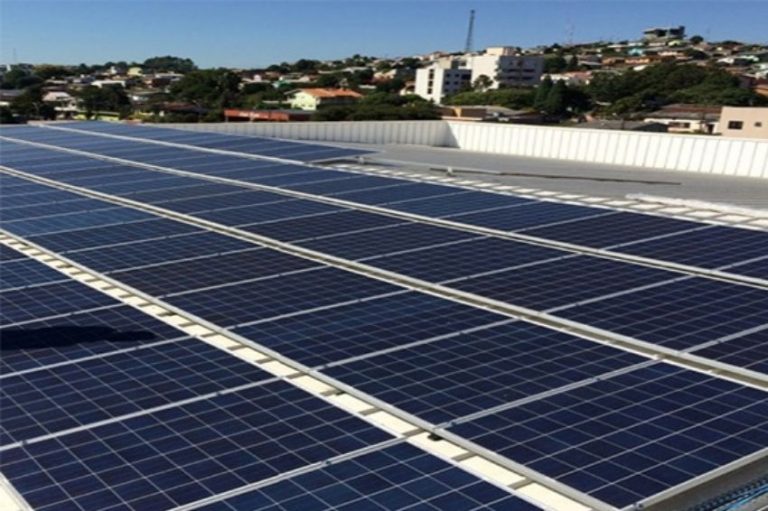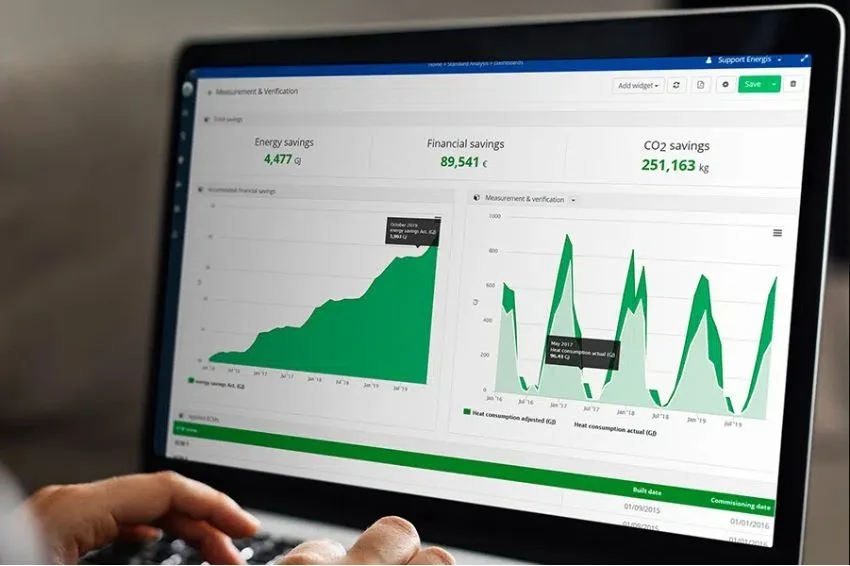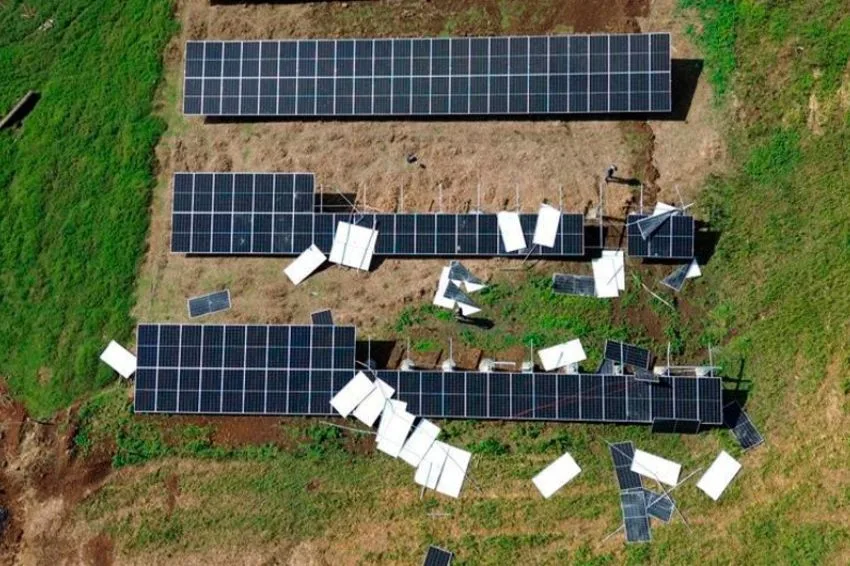In recent times we are seeing a revolution in module sizes. If in 2021 we saw a race for modules between 400-450W, now we are seeing the market in a frenzy due to 530 – 600+W modules.
The question that remains is: is it worth buying these larger modules? And the answer is: It depends!
Even with an open response, the first barrier that needs to be overcome is the biggest argument I hear from integrators when the decision is for large modules: “the client doesn't have space on the roof and I need to use larger modules”. Follow me on the account below.
A 7 kWp system, if made with 450W panels, would use 15.55 panels. I know it's not possible to have 0.55 parts of a module, but it's just to make an approximation of calculations. If we use our brand new XPower 450W, we have the following parameters:
- Efficiency: 20.7%: This means that at the moment of highest possible solar irradiation, 1000 W/m2, it generates 207 W/m²;
- Length: 2,094 m;
- Width: 1,038 m.
With this data in hand, we arrived at the following number for our system:
- Total area required to generate 7 kWp: 33.81 m²;
- Each module has 2,174 m²;
- We would then need 15.55 panels (we did the mathematical cycle to see that the accounts are in the required number of panels.
Now, let's do the same mathematical process, also considering a 7 kWp generator, but this time using another module that we have in stock, the Risen 590. In this case, we would need 11.86 panels. Below, the module data:
- Efficiency: 20.8%: This means that at the moment of highest possible solar irradiation, of 1000W/m2, it generates 208W/m2²;
- Length: 2,172 m;
- Width: 1,303 m.
With this data in hand, we arrived at the following number for our system:
- Total area required to generate 7kWp: 33.65 m²;
- Each module is 2.83 m²;
- We would then need 11.86 panels (we did the mathematical cycle to see that the calculations practically meet the required number of panels.
When we look at the numbers above, what stands out most is that we really need fewer modules when the system uses the 590W Risen, but we need to go further and carry out an analysis that is worth our technical understanding.
The area required to generate 7kW with the XPower 450 is 33.81 m² and with the Risen 590W 33.65 m². A simple difference from 1%! The power grew, but the module size grew proportionally. Here, we can conclude that lack of space can never be the reason for using larger modules, but rather their efficiency: the more efficient, the less space I will use.
So, why use modules above 500 W? This is where the beauty of engineering comes in and it has to be done. I cite some cases that justify:
- Use in microinverters: in these cases, we dilute the value of the microinverter into more module power, making the cost per Watt of the system lower;
- Ground plants: fewer connections and possible points of failure;
- When the arrangement of the modules on the roof favors them;
- When we outsource the installation service and it is charged per module (as long as the same amount is charged).
There are certainly other reasons, but what we can't do is define a standard or simply say it's a lack of space. So, what's your reason?


















15 Responses
I recently installed 8 Jinko 540 modules at home with 2 Data brand microinverters… So far I have no complaints….
The system is generating more than 500KWH
When it comes to area, the main difference is efficiency, it has always been like this since the first comparisons between Poly and Mono modules.
Currently I evaluate structural quantitative and agility for the workforce, a large and heavy module does not allow the same performance of the team, however, like each project, the installation is exclusive, so we always have to evaluate the best use of time, after all costs will always be about Man-Hour, and a balance of time in the vast majority of cases there will not be a “use”, so there are several situations in which smaller modules compensate, “ahh, how much better it was for the installer in the days of modules of 250w and less 20kg”.
A factor that must be taken into account, if the customer needs an increase in power in their system, is the tendency that after one or two years, lower power modules that become outdated are not found on the market, hence the solution is to use micro-inverters, but with the additional work of AC connection (and protections such as DPS and circuit breakers) in the property's distribution board. Everything in engineering has a solution, the point is to always apply the best cost-benefit for everything, knowing that there is a return for ANY investment in an applied solar system.
There is a factor, in my opinion, that also justifies it. We end up working with inverters, whether micro, 1,800, 2,000, and this will help in the future because it will give flexibility to exchange modules in cases of failure.
Why buy a Core I7 or a Ryzen 9 if you can use an Intel Celereon??
Technology advances and more energy per square meter is always better. Point!
There are still many inverter models on the market that do not meet the current capacities of higher power modules, especially if calculations involving temperature factors, maximum current in MPPT, among others, are considered in the project. I don't understand it's up to the designer to pay attention to these details.
Be very careful because the 665W modules that are popping up on the market require inverters that work with a current of 20A, and many inverters are limited to 16A. I've even seen reports of resellers selling these modules with 16A inverters, and then they went “poop” at the time of installation!
Important reflection! The integrator is the professional who proposes the solution to the client. The final decision, of course, belongs to the consumer, but the supplier cannot be a “slave” to the customer’s lay will. Positioning yourself technically is, above all, a matter of professional ethics.
Thanks, Bruno!
One thing I consider is space because we don't always have enough lateral space, but we do have space “up”. In some places there is no space to complete with modules lying down, but if they are longer, that's fine. And slab installations are also good depending on the shape of the slab.
Even if it gave the same power, it still makes up for the larger modules, less work, less labor, and less material to cause defects.
The article is very well written, but an update would be important to also talk about inverter module compatibility. Brands are updating their inverters, and there are distributors wanting to push the old generation inverter integrator with module >500W.
And many upgraded inverters are still not compatible with 660W modules.
Solar Channel, focuses on this subject that has a lot of integrators who don't even know what they're doing.
Royose Miranda de Frias
The only advantage I saw in installing more powerful modules is the issue of space on the customer's roof, but taking into account the comments from colleagues: Arquimedes; Tiago and Sérgio, I need to rethink this concept.
Issues already mentioned above have the factor of the weight of the modules distributed or concentrated on the roof. It makes a difference.
I completely agree, I also add that, if a 590W module has a defect, it will need to be removed for warranty maintenance. If it were a 405W module, for example, the loss would be much lower in that string, in the case of a traditional inverter. Another point, for the installer, is the difficulty of carrying, lifting and positioning a 590W module with its 2.38×1.30, compared to the traditional 2.09×1.04. Off the weight!
It is also important to observe some characteristic data of each module, such as the Voc voltage and the Impp operating current. Depending on the way the modules are arranged, it can impact the safe operation of the inverter.